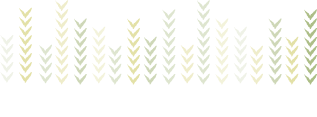ARCHIVE
Vol. 15, No. 1
JANUARY-JUNE, 2025
Editorial
Research Articles
Research Notes and Statistics
Obituary
Book Reviews
Poverty Reduction in China
*Professor, College of Saint Benedict and Saint John’s University, sucharita74@gmail.com
https://doi.org/10.25003/RAS.15.01.0008
 |
As striking as China’s transition from a poor developing country in 1978 to the largest economy in the world has been in terms of gross domestic product (at Purchasing Power Parity), the dramatic reduction in poverty (from 877.8 million poor people in 1981 to 7.3 million in 2016) has perhaps been the most commendable feat in China’s development journey. The sharp decline in the overall number of poor and eradication of “extreme poverty” (measured by the World Bank [2022] as the population living on less than USD 2.15 per day) in China has resulted not only in higher living standards in the country but also in a large decline in the global incidence of poverty.
This volume, edited by Houkai Wei and Lei Wang, provides insight into China’s strategies for and experiences of poverty alleviation. The book provides a blueprint for other developing countries seeking to alleviate poverty and is therefore a valuable resource for researchers and policymakers. The various chapters of the book provide information on specific dimensions of poverty alleviation strategies and highlight the deliberate and targeted efforts made by China to emerge from being the nation with the largest number of people in absolute poverty pre-1978 to the one that has become a model of poverty alleviation for the developing world.
State-led efforts towards poverty alleviation were comprehensive and multi-pronged. Rather than relying on a growth-first, trickle down approach, China’s successes reflect careful planning, led by political will and leadership and accompanied by targeted and intentional resource flows mobilised with the help of local political workers and community partners. While extensive assistance from international organisations such as the World Bank and the United Nations as well as international and domestic NGOs played their part, especially in the initial stages, planning and resource disbursement by the government were critical in the process of change.
The book outlines the all-sided approach of the government to expanding the capabilities of the rural poor and enabling them to break through the vicious cycle of poverty by creating traditional and new means of livelihood for them, rather than relying on a model based solely on government transfers. Notable also is the stage-by-stage approach of the government towards the implementation of its multi-pronged poverty alleviation efforts. The process began with identification and registration of the extreme poor and was followed by strategy implementation in phases accompanied by the assessment of policies through data.
The 11 chapters of the book can be roughly divided into three groups, each focusing on a separate dimension of China’s poverty alleviation experience. The volume opens with authors Wei, Wu, and Tan’s chapter on China’s poverty alleviation strategies, which from 1978–2012 focused on structural reforms and targeted investments in rural areas. Juxtaposed with changes such as jumpstarting production by the incentivisation of agricultural produce set in motion by the household contract responsibility system and introduction of prices for agricultural products, in lieu of control by communes in the pre-1978 era, were a variety of deliberate infrastructural investments in, for example, transportation and education in rural areas. This was followed in later decades by attempts to abolish absolute poverty by identifying and registering those in poverty and by supporting the poor with the help of designated work teams.
Chapters 2 and 3 by Guo and Yang focus on poverty alleviation strategies aimed at expanding production and generating employment to build the capacities of rural populations to stay out of poverty. Indirect support was provided in the form, for instance, of electricity, roads, irrigation services, and internet services, and direct support was provided through subsidised loans and preferential tariffs for existing agricultural enterprises. These provided opportunities for the employment of rural workers and incentives to entrepreneurs to create new industries, such as tourism and e-commerce, to generate a continuous flow of employment. These measures were complemented by resources directed towards skill formation, such as providing vocational training, and to match labour supply with demand. Such measures included support for relocating workers and providing lump sum subsidies to entrepreneurs for creating jobs in disadvantaged areas.
In the following two chapters, the authors focus on efforts by the government to build and sustain human capital among the poor to enable them to take advantage of employment opportunities. Li and Bai discuss targeted policies by the government, including basic health insurance to the rural poor; construction of clinics and hospitals; addressing maternal and child health, including nutrition assistance and guarantee programmes; disseminating public health measures; and preventing disease by improving water supply and sanitation. Tan and Zeng discuss the efforts of the government in building educational capabilities. Through building educational opportunities in economically backward areas, generating awareness about the importance of education, and providing targeted subsidies to access education, the poor were steered towards self-sufficiency. Achievements such as the elimination of illiteracy among youth and the middle-aged and a massive expansion of enrolment rates and schooling were made possible both by increasing the number of schools and laying emphasis on school quality through support to teachers, financial aid to families vulnerable to dropping out, and free educational access at all levels from preschool to high school to the registered poor. These were supplemented by vocational education. In both these areas, healthcare and education, local governments were given the task of setting and monitoring local targets for addressing specific local challenges.
While such approaches to poverty alleviation may be seen as quite standard in terms of building human capital and providing opportunities for income earning, the next few chapters highlight China’s efforts to move beyond traditional poverty alleviation strategies and implement measures that acknowledge modern challenges such as climate change and environmental degradation. China, with the largest population in the world, was a relatively late starter in the economic growth process and could not solely rely on industrialisation for employment generation, spurring the need for supplemental strategies.
In Chapter 6, Wang discusses China’s efforts to relocate the poor who lived in areas prone to scarcity of natural resources, environmental disasters, harsh climate, and disease. Resettlement efforts were tailored to regional geographic and socio-economic conditions, while keeping in mind potential employment possibilities in the destination areas. Efforts to relocate individuals to areas more conducive to livelihood development and settlement were supported by resources from the central government, and local governments were put in charge of the implementation of the strategies.
Zhang’s article in Chapter 7 focuses on China’s efforts at poverty alleviation through “ecological development,” wherein there was, on the one hand, compensation for poor communities that were affected by negative externalities of resource use, and, on the other hand, policies that enabled the poor to develop sustainable ways to support themselves and engage in ecologically friendly projects. Included in this overall policy were efforts to support eco-tourism and organic agriculture.
The last six chapters of the book focus on interactions between the international community and China’s poverty alleviation efforts. Chapter 8 documents the role of organisations such as the UN, the World Bank, and international non-profits in the provision of resources as well as strategies. Chapter 10 specifically focuses on the World Bank’s contributions to China’s poverty alleviation efforts through financial aid, collaboration, and sharing research and expertise. As China has successfully addressed poverty within its boundaries, its strategies for poverty alleviation, opportunities generated through growth, and growing financial resources have helped address poverty alleviation in other developing countries. Chapter 9 discusses China’s efforts in aiding developing countries in Asia, Africa, and Latin America in their efforts at poverty alleviation. The most notable among these efforts has been the partnership with Africa, which has included support for infrastructural development through aid, sharing technology and human capital development, and enabling livelihoods by facilitating trade with China. In Chapter 12, Ngcaweni discusses collaborative efforts between China and Africa through the Forum on China-Africa Cooperation (FOCAC) to address poverty in Africa, the continent with the largest head-count ratio of poor people in the world. This support includes foreign direct investment, aid, and bank loans for facilitating infrastructural development and food security, providing educational opportunities for African students in China, as well as sharing strategies and experiences. These efforts have resulted in mutually beneficial partnerships that have enabled China to gain access to natural resources from resource-rich African nations while developing the capabilities of African nations to expand livelihoods through exports to China, exempt from trade barriers.
Haro Sly and Canosa’s work in Chapter 11 focuses on how Latin American countries could learn from China’s experiences by engaging in a comparative assessment of policies. They note that China’s gradual transition from a centrally planned agrarian economy to a market-driven industry-led one is one of the critical pillars of its success in eliminating extreme poverty, a malaise that has continued to be widespread in Latin America.
Finally, in Chapter 13, Panthamit and Fang discuss the mutual benefits of collaboration between China and the Association of Southeast Asian Nations (ASEAN) wherein China is a role model for poverty alleviation for poorer ASEAN member countries such as Cambodia, Laos, Myanmar, and Vietnam, while it is also learning valuable lessons from larger ASEAN economies such as Malaysia, Singapore, and Thailand.
This reader looks forward to further research of this quality on certain related problems, which, though not the focus of the present volume, are also of relevance to the issue of poverty-reduction: migration, rural–urban disparities, and economic inequality. The analysis in this book would also have benefited from a discussion of the gender dimensions of poverty alleviation. Dealing with issues of gender differences in the labour market and in other spheres would certainly have been an important aspect of China’s great movement to end poverty in the country.
In sum, the detailed and comprehensive account of strategies adopted by China and outcomes of efforts in poverty alleviation make this volume an essential read.
References
| World Bank (2022), “Fact Sheet: An Adjustment to Global Poverty Lines,” Sep 14, available at https://www.worldbank.org/en/news/factsheet/2022/05/02/fact-sheet-an-adjustment-to-global-poverty-lines, viewed on February 12, 2025. |


